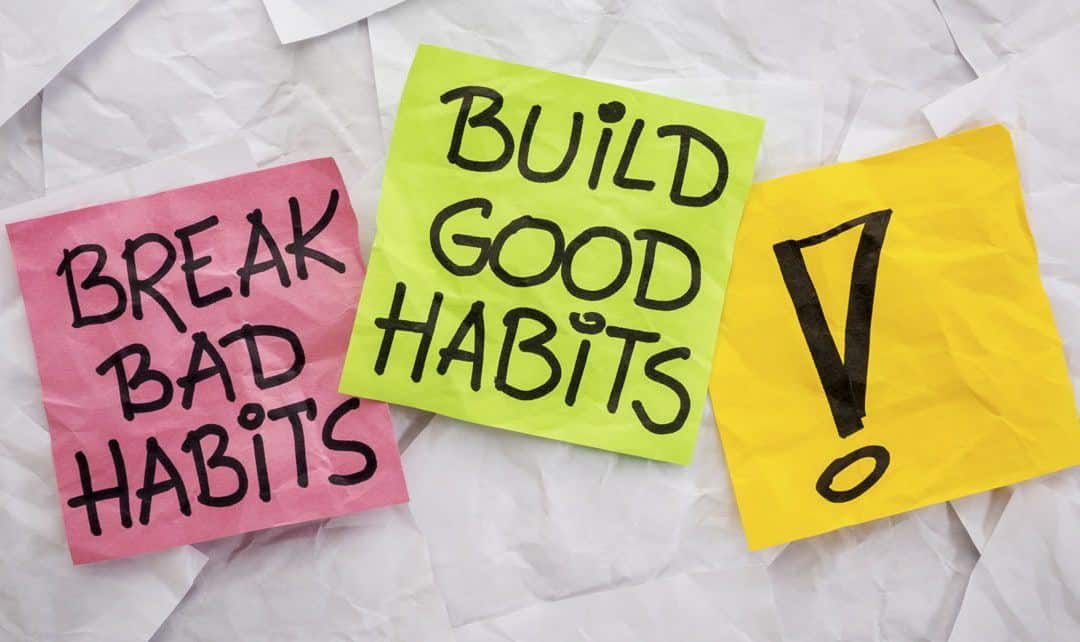If I were to ask you what a habit is, you would no doubt be able to give me a fairly good explanation. It would probably be along the lines of, “Something I do without thinking”, or “Something I do automatically” and you would not be wrong. However, you would only be scratching the surface of what a habit really is.
I didn’t think about habits a lot, let alone understand how they work, until quite recently. One of the salespeople I coach talked about all the bad habits she had developed during her career and how they were stopping her from being really successful. She wasn’t a failure by any means and had made decent money for years in the industry. Still, she felt she could do better. We all can. As her coach, I knew I had to help her break those habits and make new ones if she was going to achieve the level of success she wanted. So off I went to explore the wonderful world of habits and what I learned was nothing short of amazing.
A habit is not as simple as it seems and actually has three separate parts: the cue, the routine and the reward. To break this down, let’s look at one of the first habits we form as children, lacing our shoes. Today when we lace our shoes we don’t have to think about it. We don’t have to picture a rabbit going around a tree and down a hole or anything like that. No, we can think about what we’re going to say to our client to get that much needed price reduction, or picture what we’ll have for lunch. The habit of lacing our shoes that we’ve formed frees our mind to deal with more important things.
It wasn’t always that way. At one time a cue, I want to go outside, was followed by a routine, the rabbit goes around the tree and down the hole, which in turn was followed by a reward, I can now go outside. The reward could also have been a parent telling us what a big boy or girl we were for lacing them properly. After a while those three, repeated often enough, became the habit we all have today.
Another habit that follows the same pattern is one that smokers know all too well. We have the cue, craving for a cigarette; the routine, lighting up; and the reward, the craving goes away. Exact same pattern with very different results. One is positive – I won’t trip over my laces – while the other negative – I now have more poison in my body.
If you look at any habit you have formed in your life, good or bad, from brushing your teeth to checking your email the first thing when you wake up, and break it down, you’ll find those three components at work: cue, routine, reward.
Another strange thing about habits is that some seem to have a domino effect. One good habit can help you form other good habits and one bad habit can curse you to forming other bad habits. And here’s the real shocker. No matter what you’re doing there is a chance that it will become a habit without you even knowing it. If you re-examine your own life you’ll find a host of habits you’ve formed that you weren’t even aware were there. If you examine those habits even closer you’ll begin to see the habit tree with the other habits branching out from it.
Ready to go one layer deeper? Some of the secondary habits on your habit tree don’t seem to have any connection to the original habit. For instance, studies have conclusively shown that people who make it a habit of exercising more end up using their credit cards less. No one knows why but it happens.
So whatever habits you’re forming, they’re going to have impacts in other areas of your life. A habit you form today can impact a completely different area of your life, negatively or positively, in a month, a year or five years from now. It’s a scary thought and that’s why it’s important to understand habits.
In my next column I’ll tell you about the bad real estate habits my student had formed and what we did to break them and make them over as great real estate habits. Check it out, you just might find it habit forming.
Debbie Hanlon wears many hats (and sometimes a cape)! She is the award-winning Realtor, owner, broker and creative driving force at Debbie Hanlon Real Estate, based in St. John’s, NL. Debbie is also a very active city councillor, keynote speaker, published author and children’s entertainer. In her spare time she is completing an MBA and enjoying an active, happy life with family and friends at home in historic St. John’s. Contact her by email.

















